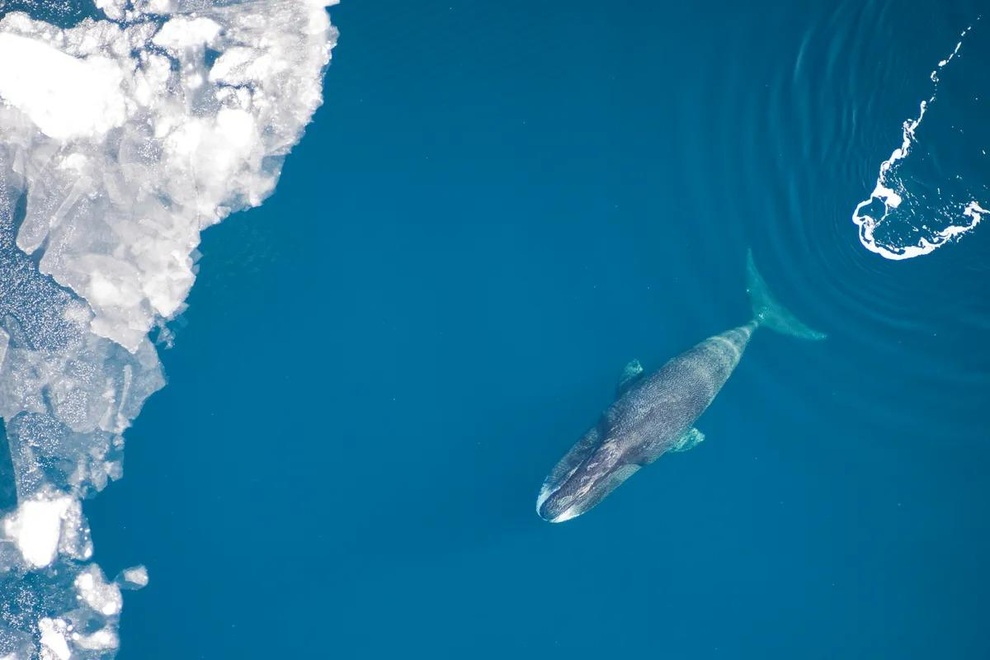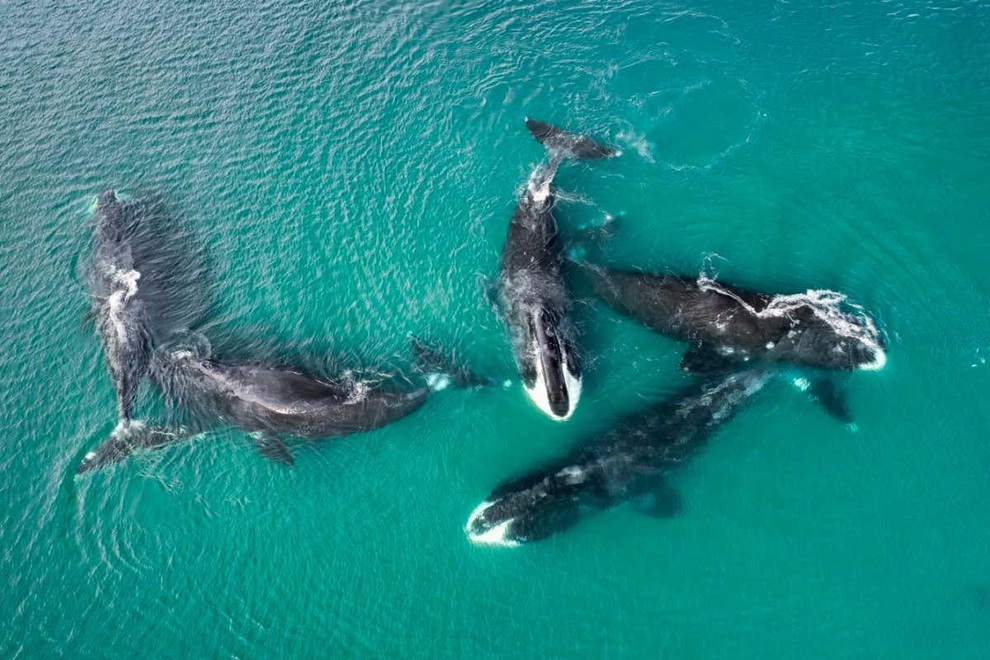When you think of the longest-living creatures on Earth, many people might think of turtles or blue whales. However, the reigning champion among mammals belongs to the bowhead whale ( Balaena mysticetus ).
This giant whale, larger than a school bus, is known to live for more than 200 years. This means that some of the bowhead whales swimming around the Arctic today may have been alive when the classic novel Moby-Dick was written in 1851.

Unique evidence from the ocean
The bowhead whale’s extraordinary longevity has been confirmed in unexpected ways. In 2007, Native hunters in Alaska found a stone harpoon embedded in the blubbery body of a whale.
The harpoon was identified as a patented weapon design that was popular between 1885 and 1895. Based on the discovery, scientists estimate the whale was about 115 years old.
However, scientists have found a more accurate way to age whales: by analyzing the lenses of their eyes. Their lenses contain an amino acid called aspartate, which exists in both left-handed and right-handed forms. These two forms accumulate in the lens at a predictable rate throughout the whale's life.
By analyzing the ratio of these two forms, scientists can accurately calculate the age of whales. A 1999 study used this method to analyze the eyes of 48 whales, and the results showed that one individual had an estimated lifespan of up to 211 years.

Biomechanics and Miraculous Survival
Bowhead whales are remarkably adapted to the harsh, icy environment of the Arctic. Their massive, stocky bodies, which can grow up to 60 feet long and weigh up to 200,000 pounds, help them retain heat effectively.
Their blubber, which can be up to 50cm thick, acts as perfect insulation. Unlike many other whale species, they do not have dorsal fins, a feature that helps them swim easily under sea ice.
Biologically, their remarkable longevity may be linked to a duplication of a gene called CDKN2C, which is known to suppress abnormal cell division and prevent cancer. The duplication of this gene appears to protect bowhead whales against age-related diseases, although it has a negative impact on male fertility.
Although some other large mammals such as elephants (which live up to 70 years) and blue whales (which live up to 90 years) also have long lifespans, none can compare to the bowhead whale.
The story of this whale is a living testament to the complexity and wonder of evolution, where giant creatures can survive and thrive in the harshest of environments.
Source: https://dantri.com.vn/khoa-hoc/kham-pha-loai-ca-voi-giu-ky-luc-tho-nhat-trong-the-gioi-dong-vat-co-vu-20250930084449899.htm



![[Photo] The 1st Congress of Phu Tho Provincial Party Committee, term 2025-2030](https://vphoto.vietnam.vn/thumb/1200x675/vietnam/resource/IMAGE/2025/9/30/1507da06216649bba8a1ce6251816820)
![[Photo] President Luong Cuong receives President of the Cuban National Assembly Esteban Lazo Hernandez](https://vphoto.vietnam.vn/thumb/1200x675/vietnam/resource/IMAGE/2025/9/30/4d38932911c24f6ea1936252bd5427fa)
![[Photo] General Secretary To Lam, Secretary of the Central Military Commission attends the 12th Party Congress of the Army](https://vphoto.vietnam.vn/thumb/1200x675/vietnam/resource/IMAGE/2025/9/30/9b63aaa37ddb472ead84e3870a8ae825)
![[Photo] Solemn opening of the 12th Military Party Congress for the 2025-2030 term](https://vphoto.vietnam.vn/thumb/1200x675/vietnam/resource/IMAGE/2025/9/30/2cd383b3130d41a1a4b5ace0d5eb989d)
![[Photo] Panorama of the cable-stayed bridge, the final bottleneck of the Ben Luc-Long Thanh expressway](https://vphoto.vietnam.vn/thumb/1200x675/vietnam/resource/IMAGE/2025/9/30/391fdf21025541d6b2f092e49a17243f)
































































































Comment (0)